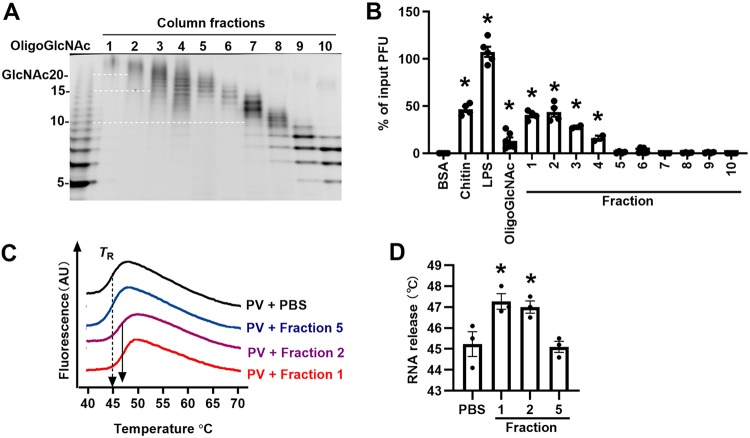FIG 5.
High-molecular-weight GlcNAc oligosaccharides (>20 units) stabilize poliovirus. (A) FACE analysis of Bio-Gel P-10 column-fractionated high-molecular-weight GlcNAc oligosaccharides. (B) GlcNAc oligomers longer than 20 units stabilize poliovirus against heat inactivation. Poliovirus (106 PFU) was incubated with 0.5 mg/ml of each compound at 45°C for 5 h. The remaining titer after incubation was quantified by plaque assay and normalized to the result for the untreated control. Results represent mean ± SEM (n = 2 to 6). *, P < 0.05 by one-way ANOVA. (C) Representative profiles of poliovirus particle stability thermorelease assay (PaSTRy). Poliovirus was preincubated with 0.5 mg/ml compound for 1 h at 37°C. Subsequently, viruses were mixed with SYBR green and heated in a real-time machine over a stepwise temperature gradient. The intensity of SYBR green fluorescence was plotted over increasing temperature. The virion RNA release temperature (TR) represents the temperature causing the highest instantaneous rate of fluorescence change and is indicated by an arrow. AU, arbitrary units. (D) Quantification of RNA release temperatures measured by PaSTRy experiments. Results represent mean ± SEM (n = 3). *, P < 0.05 by one-way ANOVA.

